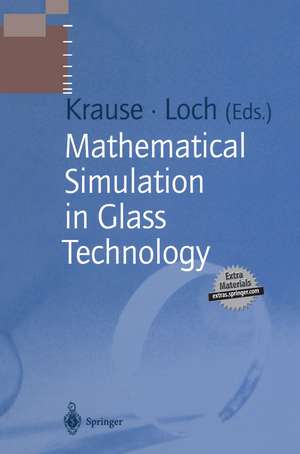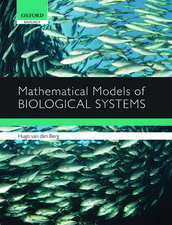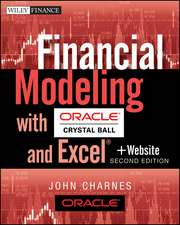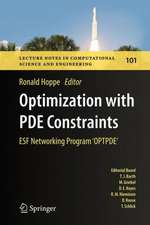Mathematical Simulation in Glass Technology: Schott Series on Glass and Glass Ceramics
Editat de Dieter Krause, Horst Lochen Limba Engleză Paperback – 20 noi 2013
| Toate formatele și edițiile | Preț | Express |
|---|---|---|
| Paperback (1) | 1825.27 lei 6-8 săpt. | |
| Springer Berlin, Heidelberg – 20 noi 2013 | 1825.27 lei 6-8 săpt. | |
| Hardback (1) | 1834.44 lei 6-8 săpt. | |
| Springer Berlin, Heidelberg – 23 iul 2002 | 1834.44 lei 6-8 săpt. |
Preț: 1825.27 lei
Preț vechi: 2225.94 lei
-18% Nou
Puncte Express: 2738
Preț estimativ în valută:
349.28€ • 373.49$ • 291.21£
349.28€ • 373.49$ • 291.21£
Carte tipărită la comandă
Livrare economică 18 aprilie-02 mai
Preluare comenzi: 021 569.72.76
Specificații
ISBN-13: 9783642627828
ISBN-10: 364262782X
Pagini: 496
Ilustrații: XI, 477 p.
Dimensiuni: 155 x 235 x 26 mm
Greutate: 0.69 kg
Ediția:Softcover reprint of the original 1st ed. 2002
Editura: Springer Berlin, Heidelberg
Colecția Springer
Seria Schott Series on Glass and Glass Ceramics
Locul publicării:Berlin, Heidelberg, Germany
ISBN-10: 364262782X
Pagini: 496
Ilustrații: XI, 477 p.
Dimensiuni: 155 x 235 x 26 mm
Greutate: 0.69 kg
Ediția:Softcover reprint of the original 1st ed. 2002
Editura: Springer Berlin, Heidelberg
Colecția Springer
Seria Schott Series on Glass and Glass Ceramics
Locul publicării:Berlin, Heidelberg, Germany
Public țintă
ResearchCuprins
Overview.- 1.1 Introduction.- 1.2 Systematics and Boundary Conditions of This Book.- 1.3 Some Important 3D Continuum Equations.- References.- 2. Melting and Fining.- 2.1 Modeling of the Melting Process in Industrial Glass Furnaces.- 2.2 Mathematical Modeling of Batch Melting in Glass Tanks.- 2.3 High-Frequency Melting of Glass in Crucibles.- 2.4 Model-Based Glass Melter Control.- References.- 3. Homogenizing and Conditioning.- 3.1 The Intensity of Mixing Processes.- 3.2 Instabilities and Stabilization of Glass Pipe Flows.- 3.3 Shape Optimization of Flanges.- References.- 4. Shaping at Low Viscosities.- 4.1 Heat Transfer Between Glass and Mold During Hot Forming.- 4.2 Remote Spectral Temperature Profile Sensing.- 4.3 Heat Transfer During Casting Experiments.- 4.4 Thin-Layer Flows of Glass.- 4.5 Pressing of Drinking-Glass Stems.- 4.6 The Use of Remeshing Methods in Pressing Simulations.- 4.7 Chill Ripples in Pressing and Casting Processes.- References.- 5. Reshaping at High Viscosities.- 5.1 Temperature-Dependent Elasticity in Reshaping Simulations.- 5.2 Sagging and Pressing of Glass Sheets.- 5.3 Calibration of Glass Tubes.- 6. Thermal Treatment.- 6.1 Verification of Relaxation Models.- 6.2 Stresses and Crack Growth in Continuously Formed Slabs.- 6.3 Thermal Tempering of Drinking Glasses.- 7. Post-Processing by Laser Cutting.- 7.1 Rough Estimation of Process Parameters.- 7.2 Numerical Analysis of Cutting Processes.- 7.3 Practical Realization.- 7.4 Appendix: Fundamentals of Fracture Mechanics.- 8. Glass Products Under Mechanical and Thermal Loads.- 8.1 Strength Optimization of Airbag Igniters.- 8.2 Stiffness and Weight Optimization of a Reticle Stage for Optical Lithography.- References.- 9. Simulation and Test of the Spinning Process Applied to Platinum Metals.- 9.1 Necessity to Shape Materials.- 9.2 Qualitative Description of the Spinning Process.- 9.3 Essential Assumptions for the Modeling of the Spinning Process.- 9.4 General Relations for the Model of the Spinning Process.- 9.5 Approximations.- 9.6 A Practical Example for the First and Second Approximations.- 9.7 Experimental Observations and Discussion.- References.- List of Contributors.- Sources of Figures and Tables.
Recenzii
From the reviews:
"This volume reports on a large variety of mathematical simulations, covering all production steps of special glass manufacturing ... . The mathematical approach often helps in understanding the overall and sometimes hidden features of processes and thus is a highly efficient tool for optimization efforts. Complementing and partly replacing experimental investigations, mathematical simulation makes possible considerable savings in time and money. Several of the results reported are unique and published for the first time." (Verre Bulletin d’informations, Vol. 9 (1), 2003)
"This volume reports on a large variety of mathematical simulations, covering all production steps of special glass manufacturing ... . The mathematical approach often helps in understanding the overall and sometimes hidden features of processes and thus is a highly efficient tool for optimization efforts. Complementing and partly replacing experimental investigations, mathematical simulation makes possible considerable savings in time and money. Several of the results reported are unique and published for the first time." (Verre Bulletin d’informations, Vol. 9 (1), 2003)
Textul de pe ultima copertă
This book is one of a series reporting on international research and development activities conducted by the Schott Group companies. With the series, Schott aims to provide an overview of its activities for scientists, engineers and managers from all branches of industry worldwide where glasses and glass ceramics are of interest. Each volume begins with a chapter providing a general idea of the current problems, results and trends related to the subject treated. This volume reports on a large variety of mathematical simulations, covering all production steps of special glass manufacturing: melting, fining, mixing, homogenizing, hot and cold forming, thermal treatment, post-processing. Modern, commercially available software packages have been used and - whenever necessary - modified to satisfy the special requirements and situations in liquid or solid glasses, or the boundary conditions of forming processes.
The CD-ROM shows 27 simulations of different aspects such as surprising details of the pressing and casting process. The mathematical approach often helps understanding the overall and sometimes hidden features of processes and thus is a highly efficient tool for optimization efforts. Complementing and partly replacing experimental investigations, mathematical simulation enables considerable savings in time and money. Several of the results reported here are unique and published for the first time. Today, the methods of mathematical simulation are an integral part of problem solving in glass technology. The book is conceived as a monograph. The individual chapters, however, are written by different Schott experts or Schott's cooperation partners from international research institutes or universities. The scientific and technical background of the methods, as well as selected results and applications are treated in detail.
The CD-ROM shows 27 simulations of different aspects such as surprising details of the pressing and casting process. The mathematical approach often helps understanding the overall and sometimes hidden features of processes and thus is a highly efficient tool for optimization efforts. Complementing and partly replacing experimental investigations, mathematical simulation enables considerable savings in time and money. Several of the results reported here are unique and published for the first time. Today, the methods of mathematical simulation are an integral part of problem solving in glass technology. The book is conceived as a monograph. The individual chapters, however, are written by different Schott experts or Schott's cooperation partners from international research institutes or universities. The scientific and technical background of the methods, as well as selected results and applications are treated in detail.
Caracteristici
First book on mathematical simulation on glass technology Includes 1 CD-ROM with computer-generated films A need for any expert in the field Includes supplementary material: sn.pub/extras




















